Co-branding is a marketing strategy that fuses two brands’ strengths to create a product that commands attention and drives purchase. Smart co branding partnerships leverage each brand’s credibility, audience, and innovation, delivering a solution that neither could achieve alone.
A standout example of a co branding partnership is Nike and Apple’s Nike+ line. This line seamlessly integrates Nike’s expertise in athletic wear with Apple’s technology, resulting in a product that enhances the fitness experience through co-branded smart shoes and fitness apps. This partnership expanded each brand’s consumer base and reinforced its market leadership.
For brands considering a co branding partner, the key is alignment—shared values, complementary audiences, and a strategy that delivers measurable value. Co branding isn’t just about visibility; it’s about creating consumer-driven innovation that strengthens both brands and guarantees market impact.
Co-Branding vs. Co-Marketing: Understanding The Differences
Understanding the differences between the two can help you decide which strategy is best for your business; here’s what you need to know:
Co-Branding: When 2 Become 1 (Product)
Co branding strategies combine two brands to create a co-branded product that enhances brand value and consumer appeal. A well-planned co branding initiative leverages the strengths of both brands, delivering a product or service that represents their combined brand identity while expanding their reach.
By aligning values and objectives, co branding strategies help brands share risks, increase market penetration, and maximize brand value. Businesses must ensure strong brand identity alignment when selecting a co branding partner to create a seamless and impactful co-branded product.
Co-Marketing: You Promote Me, I Promote You
Co-marketing is more like a joint marketing campaign. Instead of creating something new, you and another brand partner to promote each other’s existing products or services. Here’s a closer look at co-marketing:
- In co-marketing, companies collaborate on a marketing campaign. This can be shared advertisements, joint events, or social media promotions.
- Both brands share marketing responsibilities and costs, like creating content, running ads, or organizing events.
- Co-marketing campaigns are shorter-term projects. They can be a one-time event or a series of promotions over a few months.
- Unlike co-branding, the products or services stay separate. Each brand keeps its identity and promotes its products or services alongside the partner brand.
Now the differences between the 2 concepts can be best understood with an example. Let’s consider Transparent Labs, the sports nutrition company, and Tailored Athlete, a clothing company specializing in menswear for athletic builds and muscular physiques.
Let’s first take a look at co-branding.
Now both these brands can team up to create a limited edition product line called “Performance Collection.” Transparent Labs will release a special edition of their prevalent grass-fed whey protein isolate.
This formula gets a makeover with a Tailored Athlete twist. The same science-backed formula and trust from Transparent Labs comes in a unique edition flavor co-created by both brands.
Tailored Athlete launches a “Tailored Athlete x Transparent Labs” T-shirt with a breathable, sweat-wicking fabric co-branded design. With every purchase of “Performance Collection” whey protein isolate, the customers will get a Tailored Athlete x Transparent Labs T-shirt.
This is a true co-branding example because Transparent Labs and Tailored Athletes are creating a new product line – the Performance Collection. This collection wouldn’t exist without the collaboration of both brands.
Both brands benefit from each other’s strengths – Transparent Labs’ high-quality protein and Tailored Athlete’s performance apparel expertise – to create a unique offer for athletes.
Now, let’s see how co-marketing would work for both these brands.
Transparent Labs and Tailored Athletes run a social media challenge – “30-day Shredded and Styled Challenge.”
Participants would use Transparent Labs supplements and document their progress while wearing Tailored Athlete clothing. Transparent Labs writes a blog post on their website featuring Tailored Athlete clothing as the perfect fit for active lifestyles.
Tailored Athlete writes a corresponding blog post about the importance of proper nutrition for athletic results, featuring Transparent Labs supplements.
Plus, Transparent Lab’s customers can use code TRANSPARENT15 for 15% off their Tailored Athlete workout apparel purchase. Similarly, Tailored Athlete’s customers get a 15% discount on every purchase of Grass-Fed Whey Protein when they use code TAILORED15 at checkout.
Here, neither brand is creating a new product together. Instead, they each promote their existing products to the other brand’s audience. Tailored Athlete is reaching fitness-focused customers interested in Transparent Labs’ protein powder, and Transparent Labs is reaching athletes looking for clothes designed for their body type.
They are working together to expand their reach and attract new customers but are not creating a new product.
Here’s a quick table to summarize the significant differences:
| Co-Branding | Co-Marketing | |
| Execution | Producing a single product/service | Shared advertisements, joint events, social media promotions |
| Risk/Reward | Shared risks, costs, profits, and potential brand damage | Shared marketing responsibilities and costs |
| Level of Collaboration | Deep collaboration, joint development | Less intensive collaboration |
| Exposure | Both brands gain exposure to each other’s customer base | Both brands promote each other’s products/services |
| Commitment | Longer-term. Requires careful planning and alignment | Shorter-term. Can be a one-time event or a series of promotions |
| Identity | Product/service represents both brands | Each brand maintains its identity |
So, which one should you choose?
It depends on your goals. Co-branding is a superb option if you have an excellent idea for a new product that would benefit from another company’s expertise. It is also a good way to enter a new market. However, it needs a lot of time and resources.
But if you want to tap into a new customer base without creating something entirely new, co-marketing is a better fit. It is an ideal way to test the waters with another brand before going into a deeper partnership.
Why Should You Use Co-Branding: 7 Proven Benefits You Can’t Simply Ignore
54% of the companies say co-branding brings in more than 20% of their revenue. That’s just the tip of the iceberg. Here are seven more reasons why co-branding should be a part of your marketing strategy.
1. Shares Marketing Costs
Launching a new product or campaign is exciting, but it can also be expensive. Marketing costs can quickly add up – advertising, promotions, events, etc. Co-branding lets you split these costs with your partner brand – more resources to create impactful campaigns and reach a bigger audience without breaking the bank.
You and your partner can benefit from each other’s existing marketing channels, like social media followings or email lists, to spread the word further. It is like getting double the marketing power for your investment.
2. Combines Strengths & Expertise Of Both Brands
Let’s say your brand is known for its excellent design but lacks experience in a specific technology. Your co-branding partner is a tech expert with a loyal customer base. You can combine these strengths to create unique and exciting co-branded products.
This brand partnership can spark fresh ideas and result in groundbreaking product development. It is a dream team where both brands bring their A-game to create standout products.
3. Increases Market Reach
Co-branding can be your passport to new markets. Your partner brand might have a strong presence in a region you haven’t tapped into yet. Co-branding gives you access to their distribution channels and instantly puts your brand in front of new customer segments.
Co-branded marketing efforts also increase your visibility in these new markets and let you build brand awareness much faster than going solo.
4. Expands Customer Base
People trust brands they know and love. Studies show that 43% of consumers are open to trying a co-branded product from a brand they already trust. This presents a golden opportunity.
Co-branding exposes you to potential customers who might not have known about you before but are willing to give your product a shot because of your partner’s reputation. This expands your customer base and gives your brand a chance to shine in front of a new audience.
5. Adds Value To Products
Co-branding is about creating a product perceived as more valuable than the sum of its parts. Customers perceive the co-branded product to be of higher quality or offer more benefits simply because it is associated with another trusted brand.
This lets you charge a premium price for the co-branded product because customers will pay more for that perceived added value. It is a double win – you get better margins, and customers feel they are getting a superior product.
6. Enhances Brand Image
Good company keeps good company, and co-branding is no exception. 71% of consumers like co-branding partnerships and the new products they create. This presents an excellent opportunity to improve your brand equity and reputation. When you partner with a reputable brand, their reputation rubs off on your product.
This creates a positive brand image by association and increases your credibility and trustworthiness in the eyes of consumers. This increases brand and customer loyalty and creates a stronger connection with your customer base.
No doubt, brand image is super crucial for any business, but it is especially critical in health and wellness. After all, you are dealing with people’s well-being. One misstep and things can go south quickly. That is why careful partner selection is crucial for this industry.
Let’s consider the example of Numi Organic Tea, a company known for its organic products and fair-trade practices. Numi, despite its dedication to quality, doesn’t have extensive reach or brand recognition.
To improve their reputation and reach, they can partner with a brand like Green Supply – a big name in health and wellness, and for good reason. They have built a reputation for quality products.
Green Supply’s established brand recognition would put Numi’s delicious teas in front of a much wider audience. Plus, collaborating with Green Supply would make their teas more credible in the eyes of new customers.
This co-branding could create a unique line of teas for specific health goals. Imagine a “Stress-Less Sleep Tea” with calming lavender and chamomile from Numi, blended with Green Supply’s expertise to include adaptogens that promote relaxation.
Or an “Energy Boost Tea” with invigorating green tea from Numi, combined with Green Supply’s knowledge of natural energizers like guarana. The possibilities are endless. This partnership would be a win-win for both brands.
7. Differentiates From Competitors
The market is crowded, and it is getting harder and harder to stand out from the competition. Over 54% of CEOs think their companies won’t survive if they don’t keep up with their rivals. Co-branding is a powerful tool for differentiation.
Think about it this way: if a customer sees a shelf full of similar products, a co-branded product instantly jumps out because it offers something different.
This can be especially helpful if you are a smaller brand trying to make a name for yourself. Partnering with a well-established brand creates a buzz around your product and makes you stand out as an innovator in your industry.
7 Co-Branding Strategies That Deliver Results & Guarantee Growth
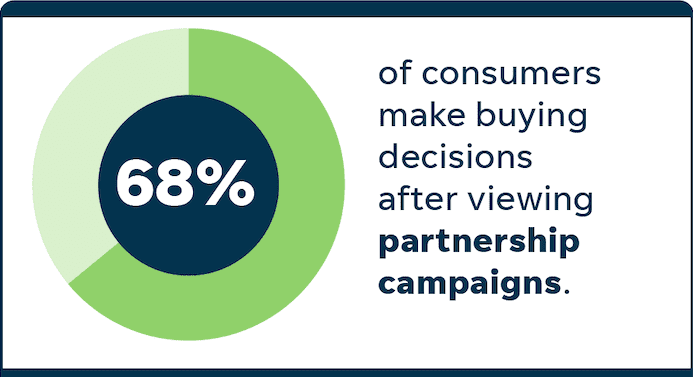
68% of consumers can make buying decisions after seeing co-branded campaigns, all without talking to a sales representative. To get your customers to act the same way, here are 7 strategies you can use. Pay attention to the practical steps and consider how to adapt them for your business.
I. Complementary Product Pairing
In this strategy, you team up with another brand whose product naturally complements yours. Here’s how to make it work:
- Do your research to find the perfect match. Identify products that naturally complement yours. If your team is stretched thin or lacks research expertise, you can hire a research specialist from a talent acquisition firm like Genius. These experts can conduct thorough market analysis to identify potential partner brands and provide insights into consumer preferences for a successful and strategic partnership.
- Think across consumption stages: pre-consumption (like coffee & creamer), during consumption (chips & salsa), or post-consumption (diapers & wipes).
- Once you’ve identified a dream pairing, reach out to that brand. Negotiate a collaboration agreement that benefits both parties. Clearly define roles, responsibilities, and profit-sharing.
- Create eye-catching packaging that combines both products and positions them as a single unit. This could be a bundled package or a multi-compartment container.
- Work closely with retailers to get prominent shelf placement for your co-branded product. This could be a dedicated end cap display or a spot within the aisles where your target customer shops.
- Offer discounts or promotions to incentivize customers to try the paired products. This could be a bundled price reduction, a free sample of the other brand’s product, or a loyalty program reward for purchasing both items.
II. Ingredient Mash-Up
This strategy taps into current trends and adds a new flavor or ingredient to your product. Here’s how to create a winning ingredient mash-up:
- Keep your ear to the ground and identify trending flavors or ingredients that complement your existing product. Look at what is popular in your industry and what consumers are passionate about.
- Work with your research and development team to create a new product or flavor variation with the chosen ingredient. This could be a completely new offer or a limited-edition twist on a classic.
- Before a full launch, conduct small-scale tests or focus groups to understand consumer reactions. This lets you refine the product and ensure it resonates with your target audience.
- Once you are confident in your creation, develop a launch strategy. Use digital marketing campaigns to generate buzz. The best way to go about it is to use Google’s Performance Max campaigns. It uses Google’s machine learning to automatically show your ads across Search, Display websites, YouTube, Discover feed, Gmail, and Maps. This lets you reach fans of both your brand and your co-branding partner wherever they are most engaged, without having to manage separate campaigns for each channel.
- You can also organize sampling events to let people try the product firsthand and partner with retailers for in-store promotions and displays.
III. Co-Branded Packaging
Co-branded packaging involves creating packaging that features both brands prominently. This strategy works best when the brands have complementary images and customer bases. Here’s how you can do it:
- Select a brand with values and aesthetics that complement yours. This ensures the co-branded packaging appeals to both brands’ audiences.
- Work with your partner brand to design the packaging. Make sure both brands are featured prominently and equally. Use elements from both brands, like logos, colors, and fonts.
- Make sure the packaging follows both brands’ guidelines. Maintain consistency in colors, fonts, and overall aesthetics to avoid confusing consumers.
- Once the design is finalized, get approval from both companies’ marketing and legal teams. This ensures compliance with regulations and global brand strategy (if you are working with a global brand).
- Develop a marketing plan to promote the co-branded product. Use both brands’ marketing channels and coordinate efforts. While social media is all the rage these days, don’t forget the power of email marketing. It is still one of the most effective mediums, with a staggering ROI of $36 for every $1 spent. So while you are tweeting and snapping, make sure you are not overlooking your email strategy.
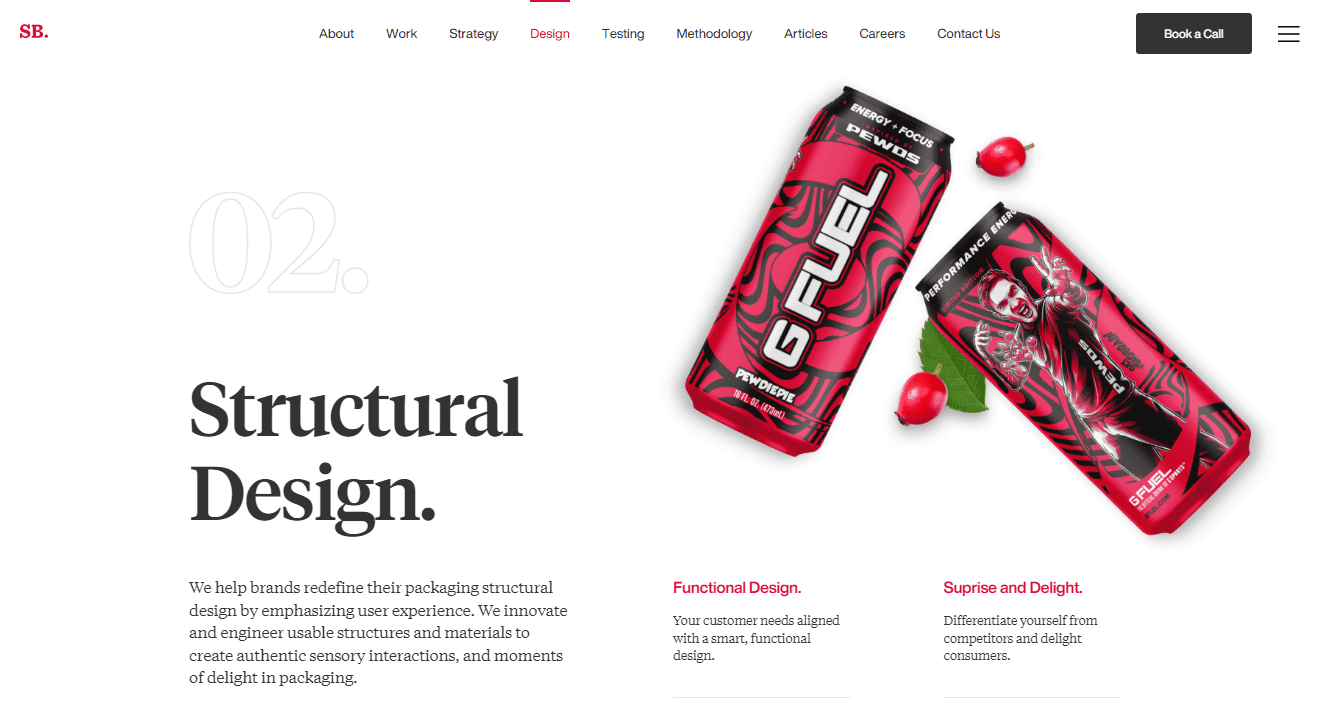
Partner with SmashBrand to create visually appealing and consumer-centric packaging that can help your co-branded product stand out. We use data and consumer testing to ensure that it resonates with your target market and drives sales.
IV. Limited Edition Flavor/Product
Sometimes also called joint-venture co-branding, this involves creating a limited edition, trendy variation of your existing product that generates excitement and urgency among consumers. Here’s how to make a limited-edition product a success:
- Don’t just guess what flavors people want. Focus on what your customer wants. Companies that put their customers first are 60% more profitable than those that don’t. Ask your brand management team to conduct market research and gather consumer insights on desired or trendy flavors or product types. Understand what excites your customers to pick the limited edition winner. Social listening tools and focus groups can be valuable here.
- Create a special version of your existing product based on the research findings. This could be a completely new variation, a unique combination of existing flavors, or even a limited-edition size or format.
- Remember, “limited edition” means exactly that – a temporary offer. So clearly define how long the limited edition product will be available to inject excitement and encourage consumers to try something new before it disappears.
- Regular packaging is great but for a limited edition, you need something special. Design unique packaging that visually stands out from your standard offers. The design should clearly communicate the limited-edition nature – a countdown timer or scarcity messaging like “While Supplies Last.”
- Develop a marketing campaign that builds excitement and a sense of urgency. Use social media teasers to create a buzz before the product launch. Partner with influencers who match your target audience to spread the word and generate hype.
V. Character/Celebrity Licensing
In this strategy, you incorporate a well-known character or celebrity into your brand. This helps you tap into their existing fan base to generate excitement for your brand. Here’s how to make it work for you:
- Carefully choose a character or celebrity that aligns with your brand values and matches your target audience. Think about age groups, interests, and overall brand image.
- Negotiate a licensing agreement that outlines the partnership terms. This will specify how the character/celebrity’s image can be used, the duration of the agreement, and the compensation involved. Secure legal counsel to ensure all aspects are covered.
- Integrate the character or celebrity’s image into your product packaging. You can prominently display it on the front of the package or add more subtly within the design. Make sure it is visually appealing and clearly communicates the co-branding element.
- Use the character’s popularity to your advantage. Use social media platforms where they have a strong presence and create engaging content that promotes your brand. Host a launch event – physical or virtual – featuring the character/celebrity. Their presence will generate major buzz and excitement for your new co-branded product.
VI. Retailer Exclusive Co-Branding
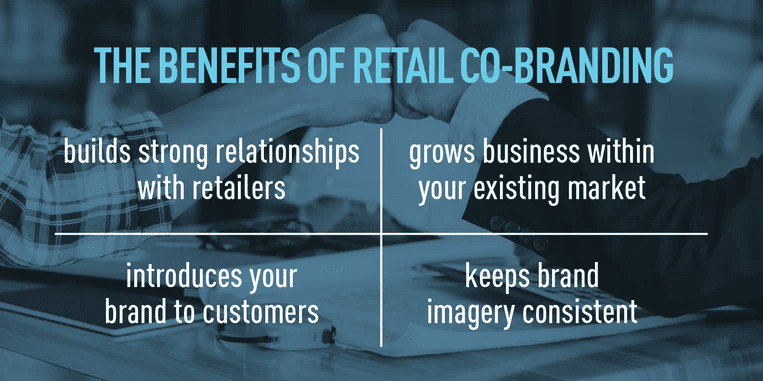
This strategy lets you partner with a specific retailer to create a unique product sold only at their stores. It is a win-win: you get access to the retailer’s established customer base, and they get an exclusive product to attract shoppers. Here’s how to do it step by step:
- First, you need to find a retailer whose customer base matches your target market. Look for a retailer that attracts the same type of customers you want to reach.
- Once you identify the right retailer, create a product that will be sold exclusively through them. It could be a special size, flavor, or bundle not available anywhere else. This product should stand out and offer something unique to the retailer’s customers.
- Work with the retailer to create prominent in-store displays for the co-branded product. This could be a dedicated end cap display near the store entrance, a high-traffic aisle placement, or even a product demonstration area.
- Monitor sales data of the co-branded product closely. Plus, gather consumer feedback through surveys or focus groups to assess the partnership’s success.
VII. Cause Marketing Partnership
Here, you partner with a nonprofit to support a cause important to your target audience, strengthening your brand image while giving back. Here’s how to make this strategy a win-win:
- Start by choosing a cause that matters to your target audience. Think about what your customers care about. It could be environmental issues, education, health, or social justice.
- Find a nonprofit organization that aligns with the cause. Make sure the nonprofit is reputable and has a strong track record. This makes your partnership more credible and reassures your customers that their support is making a real difference.
- Incorporate the nonprofit’s branding and messaging into your product packaging. This could be their logo, a short tagline about the cause, or a QR code that leads to their website.
- Set up a clear way to donate a portion of your sales to the cause. This could be a percentage of each sale or a specific amount per product sold. Be upfront about the donation amount and include this information on your packaging and website. Being transparent can get 73% of customers to pay more for your products, even if there are cheaper options from companies that aren’t as transparent.
- Regularly update your customers on the impact of the partnership. Share the results of the donations and how they are used by the nonprofit.
3 Co-Branding Examples To Inspire Your Next Partnership
These 3 co-branding examples are not just about admiring them from afar. They are here to show you how to create a successful co-branding partnership of your own. Notice how each company found a partner whose brand complemented theirs to create something exciting and new for their customers.
Milka & Oreo
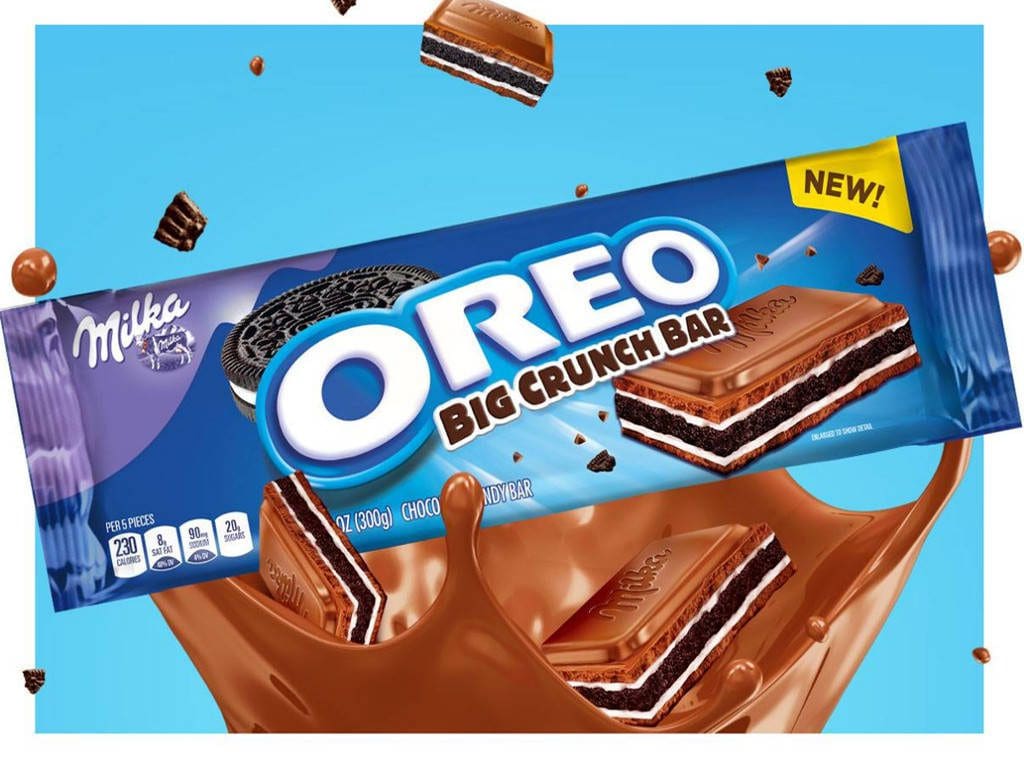
Milka, a popular European chocolate brand known for its Alpine milk chocolate, wanted to expand its reach in the United States. Oreo, the iconic cookie brand loved by people of all ages, was already a household name. Together, they created a limited-edition Milka chocolate bar packed with Oreo cookie pieces.
This co-branding combined 2 beloved treats. Milka offered a familiar chocolate bar with a fun, new twist – the crunchy and chocolatey Oreo bits. Oreo, on the other hand, got its familiar cookie into a completely new format, reaching chocolate lovers who might not typically buy Oreos.
The limited-edition bar created a buzz among both Milka and Oreo fans. It gave loyal customers something fresh and exciting to try, while also drawing in new customers who loved the tasty flavor combo.
Kraft Mac & Cheese With SpongeBob SquarePants
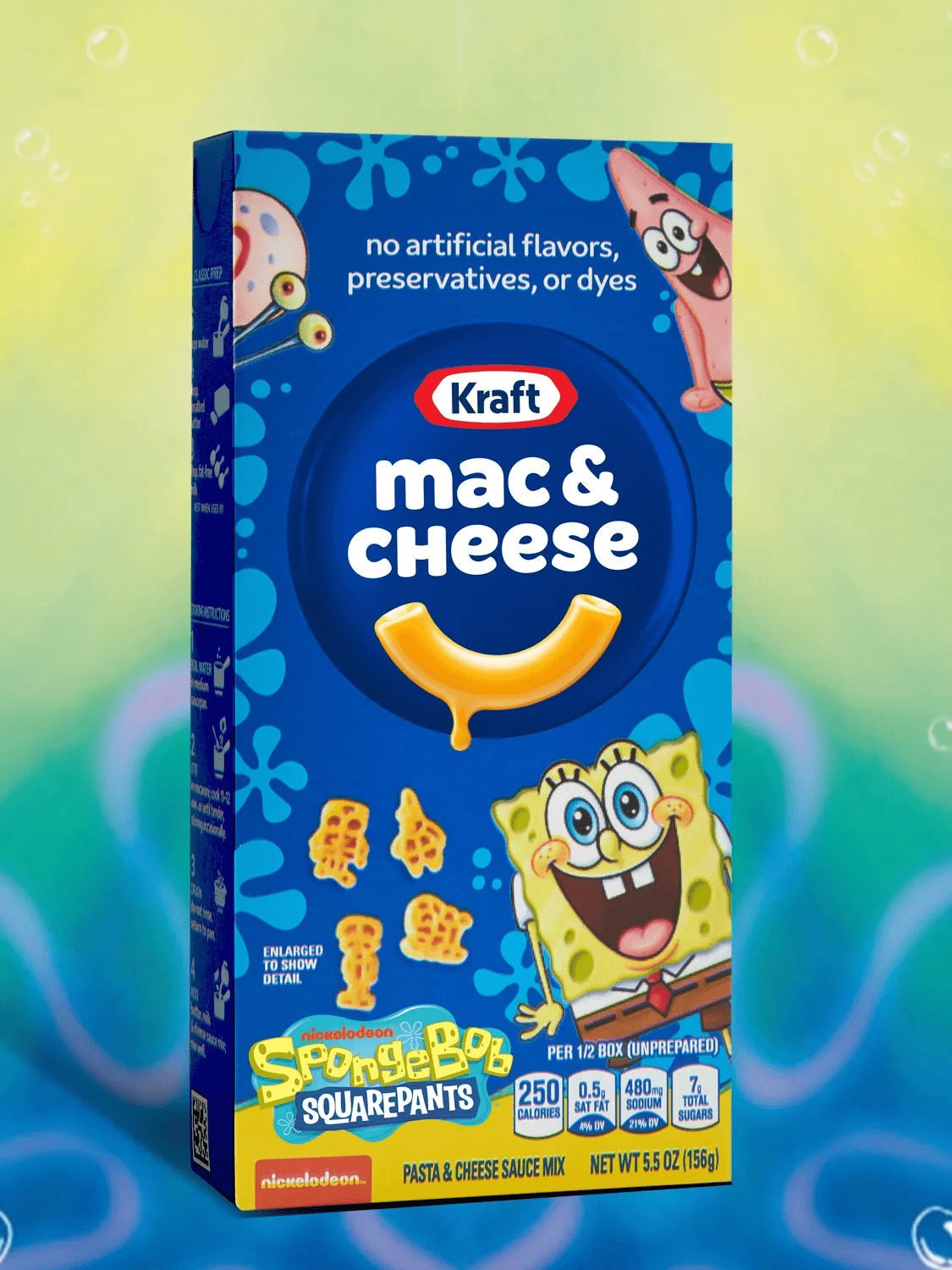
Kraft Mac & Cheese, a childhood favorite, wanted to find a way to connect with younger generations. It partnered with the iconic cartoon character SpongeBob SquarePants. They launched special theme products which included boxed mac & cheese with fun shapes like Patrick and SpongeBob, and even SpongeBob-shaped microwavable bowls.
This co-branding tapped into nostalgia. Adults who grew up watching SpongeBob were instantly drawn to the familiar character, and parents knew the limited-edition packaging would be a hit with their kids. This strategy increased sales for Kraft Mac & Cheese and introduced the brand to a whole new generation of potential customers.
Post Cereals & Hostess
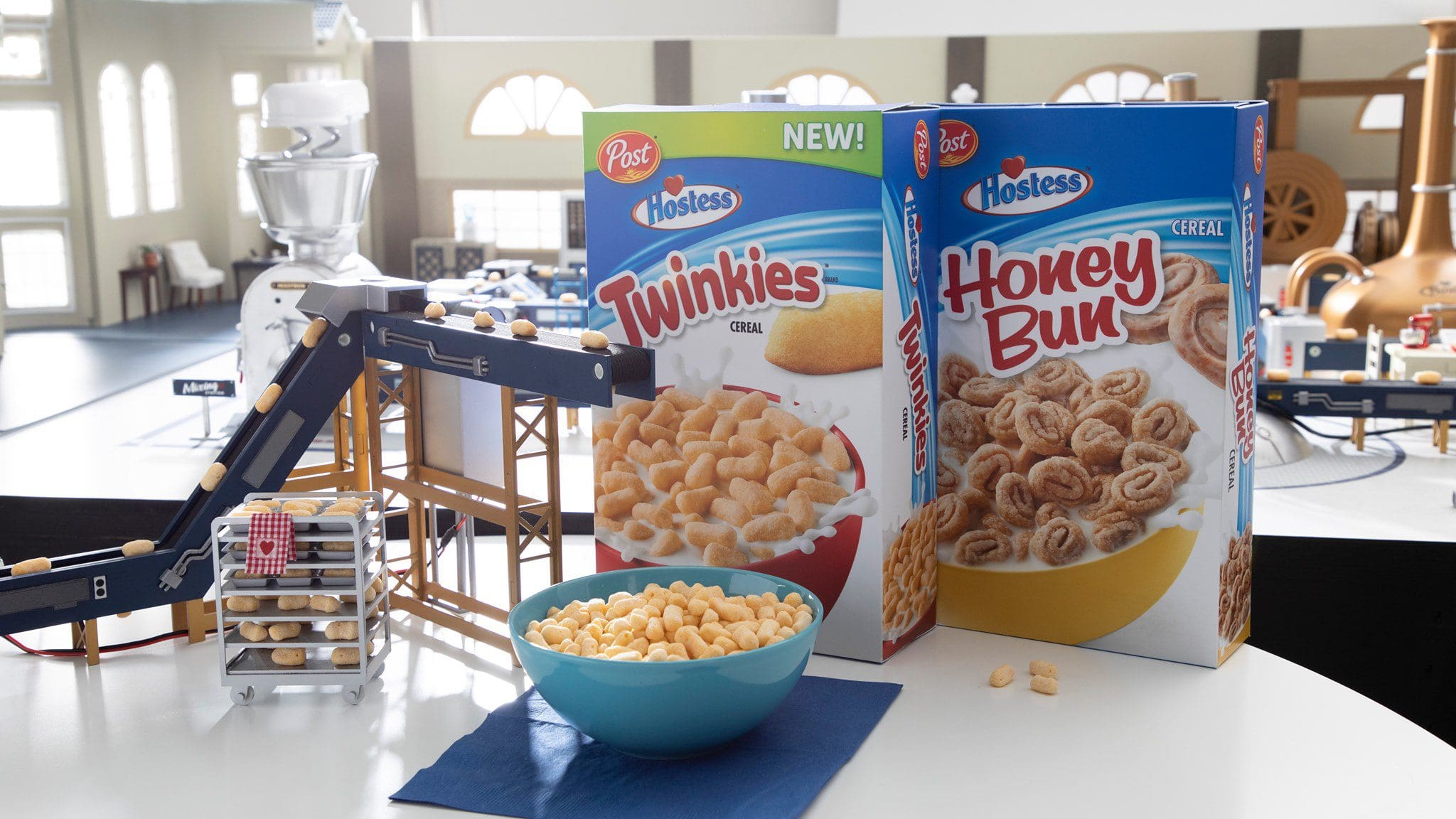
Post Cereals, a leading breakfast cereal brand, wanted to create a more exciting breakfast option for kids. Hostess, known for its delicious Twinkies and other sweet treats, is a brand that brings back nostalgic memories for many adults.
Post Cereals launched a line of cereals featuring Hostess favorites. This included cereals with marshmallows flavored like Twinkies and Honey Bun that brought the taste of these iconic treats right to the breakfast table.
The Post Cereals and Hostess co-branding campaign was a clever way to combine the fun and flavor of Hostess treats with the convenience and familiarity of breakfast cereal. This appealed to both kids, who loved the familiar flavors, and adults who enjoyed a touch of nostalgia.
SmashBrand: Your Partner For Co-Branding Success In CPG
SmashBrand is a data-driven branding and packaging design agency specializing in the consumer packaged goods (CPG) and fast-moving consumer goods (FMCG) sectors. With extensive experience, we have helped brands improve their market performance. Our strategic process helped over 200 brands achieve over $20 billion in incremental sales.
Here’s how SmashBrand can help your business:
- Identify potential co-branding partners that are a good fit.
- Develop a co-branding strategy that clearly defines the goals of the partnership and how each brand will benefit.
- Assess the potential risks and rewards of different co-branding partnerships.
- Consumer insights and iterative testing ensure that the co-branded product resonates with the target audience of both brands.
- Create packaging that effectively communicates the co-branding message to consumers.
Conclusion
Co-branding is a triple win – for you, your partner brand, and most importantly, for the customers. Take it as a chance to listen to what customers want and deliver something unique and exciting, something truly special. Remember, tracking the effectiveness of your campaign is the only way you can determine the effectiveness and whether it’s worth the investment. Marketing teams can track partnership success through tools such as a brand awareness dashboard that measures visibility across multiple channels and markets.
At SmashBrand, we specialize in helping businesses develop strong brand identities and compelling packaging. Through market research, consumer testing, and creative design, we will ensure your co-branded product stands out on the shelf and delivers the results you are looking for.
Book a call with us and see how we can help you create get the most out of your co-branding partnership by creating a packaging design that is optimized for purchase intent at shelf.
Subscribe to
Nice Package.
A monthly newsletter that unpacks a critical topic in the FMCG & CPG industry.
Free Resource.

CPG product repositioning guide.
Explore the five undeniable signs your CPG product needs repositioning along with strategies for leveraging consumer insights for a guaranteed market lift.
Learn More About CPG product repositioning guide.